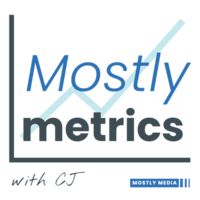👋 Hi, it’s CJ Gustafson and welcome to Mostly Metrics, my weekly newsletter where I unpack how the world’s best CFOs and business experts use metrics to make better decisions.
The best way to “make money” is to be “in the way of the money.”
That’s fintech in a nutshell—facilitating, simplifying, or accelerating transactions.
Once trust is built and infrastructure costs are amortized (a fancy way of saying “paid for”), fintech companies become cash cows. They scale efficiently, with revenue per employee skyrocketing.
But early on, margins are razor-thin, and risk is high.
Regulations are constantly evolving to protect consumers, making compliance and Anti-Money Laundering (AML) monitoring non-negotiable (and expensive). As a fintech operator, your customers’ risk becomes your risk.
This guide breaks down the key metrics you need to scale a fintech successfully. I’ve dug into investor day presentations from PayPal, Toast, Block, MoneyLion, Coinbase, Affirm, Bill.com, and more to ensure we’re looking at real-world benchmarks.
Section 1 is free. Sections 2–5 are for paid readers only. Let’s dive in.
1. Top Line Metrics
These metrics define overall business health and scalability.

Total Payment Volume (TPV)
This is the “big” number: The total dollar amount of sales you facilitate
Marketplace businesses often call this GMV (gross merchandise value), but either way, it’s not your revenue. More on that later.
Annualized Processing Volume (APV)
A forward-looking view on TPV
Think of it like ARR for payments—a proxy for your “run rate” at any point in time
Calculated as the last period’s exit volume (adjusted for calendar days if needed) multiplied by 12
Net Revenues
This is the “real” number: What actually hits your P&L—your real revenue after payouts, interchange fees, and other costs.
To get to net revenue, you need to know your net take rate
Net Take Rate
The percentage of transaction value retained as revenue—your pricing power in a nutshell.
A higher take rate means you’re adding more value. A declining one could signal pricing pressure or the need to renegotiate with payment processors.
For context: PayPal’s take rate is around 1.9% based on recent figures.

2. Customer Engagement Metrics
These metrics show how often users engage with your platform and how sticky it is.
Subscribe to our premium content to read the rest.
Become a paying subscriber to get access to this post and other subscriber-only content.
UpgradeYour subscription unlocks:
- In-depth “how to” playbooks trusted by the most successful CFOs in the world
- Exclusive access to our private company financial benchmarks
- Support a writer sharing +30,000 hours of on-the-job insights

